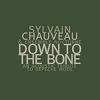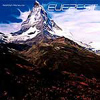 I haven’t seen Dummy Jim yet, but if this soundtrack is any indication, it must be a truly unconventional and memorable film. With the aid of bizarre instrument builder Sarah Kenchington, Daniel Padden and his cohorts have created a kaleidoscopic collision of traditional Anglo-folk, free jazz, drone, and deep-seated eccentricity that sounds like absolutely no one else.
I haven’t seen Dummy Jim yet, but if this soundtrack is any indication, it must be a truly unconventional and memorable film. With the aid of bizarre instrument builder Sarah Kenchington, Daniel Padden and his cohorts have created a kaleidoscopic collision of traditional Anglo-folk, free jazz, drone, and deep-seated eccentricity that sounds like absolutely no one else.
Two new shows just for you. We have squeezed out two extended release episodes for this weekend to get you through this week. They contain mostly new songs but there's also new issues from the vaults. The first show features music from Rider/Horse, Mint Field, Robert Aiki Aubrey Lowe, Anastasia Coope, ISAN, Stone Music, La Securite, Bark Psychosis, Jon Rose, Master Wilburn Burchette, Umberto, Wand, Tim Koh, Sun An, and Memory Drawings. The second episode has music by Laibach, Melt-Banana, Chuck Johnson, X, K. Yoshimatsu, Dorothy Carter, Pavel Milyakov, Violence Gratuite, Mark Templeton, Dummy, Endon, body / negative, Midwife, Alberto Boccardi, Divine. Cow in Maui from Veronika in Vienna. Get involved: subscribe, review, rate, share with your friends, send images! |



 This is allegedly the swansong for Soundway’s excellent Panama! series- an unexpected choice, given that the rich vein of material doesn’t show the slightest sign of being exhausted (perhaps the compilers just need some time away from the heat and the mosquitoes). Though the focus has shifted away from funk this time, this third volume remains every bit as exuberant, smoldering, absurd, and fun as its predecessors.
This is allegedly the swansong for Soundway’s excellent Panama! series- an unexpected choice, given that the rich vein of material doesn’t show the slightest sign of being exhausted (perhaps the compilers just need some time away from the heat and the mosquitoes). Though the focus has shifted away from funk this time, this third volume remains every bit as exuberant, smoldering, absurd, and fun as its predecessors. 2009 has certainly been a great year for this young banshee from Wisconsin. Zola Jesus has put out numerous releases this year, each featuring high quality songwriting and production. To have so many releases of such a high quality is truly impressive, and this collection continues that hot streak.
2009 has certainly been a great year for this young banshee from Wisconsin. Zola Jesus has put out numerous releases this year, each featuring high quality songwriting and production. To have so many releases of such a high quality is truly impressive, and this collection continues that hot streak. Sylvain Chauveau’s acoustic tribute to Depeche Mode starts off well but soon plummets into a chasm of middle of the road yawns. Down to the Bone is less of a tribute and more of an insult.
Sylvain Chauveau’s acoustic tribute to Depeche Mode starts off well but soon plummets into a chasm of middle of the road yawns. Down to the Bone is less of a tribute and more of an insult. Eight new broadcasts from the chilly world of the Arctic Lofoten Islands are made available on this double disc and, in some ways, they all exemplify just how much Steven Stapleton must be falling in love with digital sound stretching. Just as the first volume was an effort to reshape the world around them in sound, the second volume of Shipwreck Radio turns the world of Lofoten into a strange place occupied by distortions of the Arctic's natural sound world.
Eight new broadcasts from the chilly world of the Arctic Lofoten Islands are made available on this double disc and, in some ways, they all exemplify just how much Steven Stapleton must be falling in love with digital sound stretching. Just as the first volume was an effort to reshape the world around them in sound, the second volume of Shipwreck Radio turns the world of Lofoten into a strange place occupied by distortions of the Arctic's natural sound world. For their latest collaboration, Boris and Merzbow have produced an elemental and tempestuous album. It sounds like a year’s worth of weather condensed into the space of a CD.
For their latest collaboration, Boris and Merzbow have produced an elemental and tempestuous album. It sounds like a year’s worth of weather condensed into the space of a CD. Just like their previous album, Face.(a,this year's release from Collections of Colonies of Bees manages tosqueak in very quietly just underneath the radar, without a lot of hypeor fanfare, to surprisingly become one of my top albums of the year.The formula holds close to the last album: taking an instrumental rock"band" setup and mutating it through inhuman editing. It's a setupwhich has gained popularity in the last couple years with groups likeRadian, Nudge, Trapist, and Supersilent, but Collections of Colonies ofBees have become masters at the art. Pele have decided to call itquits, however, the Collections lineup is now almost identical to Pele,with Jon Mueller and Chris Rosenau bringing other Pele alumni Jon Minoron board this time along with Jim Schoenecker. (Perhaps they weregetting tired of being in TOO many bands—see above review!) Bright andspringy guitar melodies live harmoniously with manipulated twitters,beats and whirrs, while miscellaneous unidentifiable objects providerhythm colorization in spots. Fans of both the upbeat Pele andMuller/Rosenau's improvisational experimental outings find a mediumhere, as the line is delicately walked between pop melodies and nerdyimprovisation. Some songs, (nine out of ten are named "fun") are mostdecidedly organically driven, while some are clearly more electronic.The story of the recordings is that the band took a number of differentapproaches to each composition, and the Japanese version of Customer,on Some of Us, uses the more electronic versions of the more organicsongs here and more organic versions of the more electronic songscontained here. If that's not confusing enough, a vinyl edition of therecord contains only the "electronic" songs from both. While a disclike this might be good for an afternoon read at home, I highlyrecommend playing at loud volumes to fully enjoy some of the fantasticlow frequency bass sounds and alien ticks which dance around the ears.Like a fantastic sushi dinner, at the end I'm eager for more, andunfortunately that means getting a hold of Customer's Japanese counterpart.
Just like their previous album, Face.(a,this year's release from Collections of Colonies of Bees manages tosqueak in very quietly just underneath the radar, without a lot of hypeor fanfare, to surprisingly become one of my top albums of the year.The formula holds close to the last album: taking an instrumental rock"band" setup and mutating it through inhuman editing. It's a setupwhich has gained popularity in the last couple years with groups likeRadian, Nudge, Trapist, and Supersilent, but Collections of Colonies ofBees have become masters at the art. Pele have decided to call itquits, however, the Collections lineup is now almost identical to Pele,with Jon Mueller and Chris Rosenau bringing other Pele alumni Jon Minoron board this time along with Jim Schoenecker. (Perhaps they weregetting tired of being in TOO many bands—see above review!) Bright andspringy guitar melodies live harmoniously with manipulated twitters,beats and whirrs, while miscellaneous unidentifiable objects providerhythm colorization in spots. Fans of both the upbeat Pele andMuller/Rosenau's improvisational experimental outings find a mediumhere, as the line is delicately walked between pop melodies and nerdyimprovisation. Some songs, (nine out of ten are named "fun") are mostdecidedly organically driven, while some are clearly more electronic.The story of the recordings is that the band took a number of differentapproaches to each composition, and the Japanese version of Customer,on Some of Us, uses the more electronic versions of the more organicsongs here and more organic versions of the more electronic songscontained here. If that's not confusing enough, a vinyl edition of therecord contains only the "electronic" songs from both. While a disclike this might be good for an afternoon read at home, I highlyrecommend playing at loud volumes to fully enjoy some of the fantasticlow frequency bass sounds and alien ticks which dance around the ears.Like a fantastic sushi dinner, at the end I'm eager for more, andunfortunately that means getting a hold of Customer's Japanese counterpart. Having one or two good songs sandwiched between pointless exercises inmelodic looping is quite frustrating. Even worse is when a minute totwo minutes of a song are utterly captivating while the rest of itsimply seems like an effort to move up a very steep hill. Locatedsomewhere in the middle of this messy album is a vacuum of badproduction that consumes all of the stumbling rhythms and accentuatesthe rather flat and circular melodies. I'm never quite sure which I'msupposed to be listening to more and a complete lack of dynamics in thesong-writing only makes the banality of Heimlich Maneuverall the more blinding. For example, near the end of the album"Faulhorn" begins to resonate above and beyond the routine that hasbeen the entirety of the album; but as the song progresses, it becomesobvious that what I'm dealing with is actually a sonic cock-tease. As abass line and regiment of percussive sounds march into the piece,everything begins to blend together into a murky soup. Repeat andrecycle and a large portion of the album is enumerated and elucidatedas much as is possible within the realms of boredom. "Ro3" and "Dex"both flaunt a predisposition towards excellence and, to some extent,"Dex" actually succeeds. Maybe the track's short running time has alittle bit to do with its success or maybe it's because Everest don'tbother with adding layers of unnecessary instrumentation andornamentation. Everest work best on a simple and direct basis: anyexuberance or decoration kills the mood they can develop with solittle. "Falke," when it begins, rolls like a gorgeous thunder andcontinues to do so without being stuffed full of spiffy effects orabrupt changes in thematic direction. Even if the band could escapetheir inability to keep everything within a creatively controllablespace, they'd have to deal with the monotonous tone of the album as awhole. Many of their warm and welcoming synth tones feel rehashed bythe time "Channel Sky" cuts out. There's something lovable about thisrecord, but it's ultimately just another example of how to loop beatsand melodies ad nauseam. To be fair, there are a few tracks thatcould've made up the contents of a beautiful little EP, but within theconfines of the rest of the album they suffer considerably.
Having one or two good songs sandwiched between pointless exercises inmelodic looping is quite frustrating. Even worse is when a minute totwo minutes of a song are utterly captivating while the rest of itsimply seems like an effort to move up a very steep hill. Locatedsomewhere in the middle of this messy album is a vacuum of badproduction that consumes all of the stumbling rhythms and accentuatesthe rather flat and circular melodies. I'm never quite sure which I'msupposed to be listening to more and a complete lack of dynamics in thesong-writing only makes the banality of Heimlich Maneuverall the more blinding. For example, near the end of the album"Faulhorn" begins to resonate above and beyond the routine that hasbeen the entirety of the album; but as the song progresses, it becomesobvious that what I'm dealing with is actually a sonic cock-tease. As abass line and regiment of percussive sounds march into the piece,everything begins to blend together into a murky soup. Repeat andrecycle and a large portion of the album is enumerated and elucidatedas much as is possible within the realms of boredom. "Ro3" and "Dex"both flaunt a predisposition towards excellence and, to some extent,"Dex" actually succeeds. Maybe the track's short running time has alittle bit to do with its success or maybe it's because Everest don'tbother with adding layers of unnecessary instrumentation andornamentation. Everest work best on a simple and direct basis: anyexuberance or decoration kills the mood they can develop with solittle. "Falke," when it begins, rolls like a gorgeous thunder andcontinues to do so without being stuffed full of spiffy effects orabrupt changes in thematic direction. Even if the band could escapetheir inability to keep everything within a creatively controllablespace, they'd have to deal with the monotonous tone of the album as awhole. Many of their warm and welcoming synth tones feel rehashed bythe time "Channel Sky" cuts out. There's something lovable about thisrecord, but it's ultimately just another example of how to loop beatsand melodies ad nauseam. To be fair, there are a few tracks thatcould've made up the contents of a beautiful little EP, but within theconfines of the rest of the album they suffer considerably. Story goes that a friend or fan passed ex-Can vocalist Damo Suzuki aCul de Sac record on the lucky hunch that he'd find a kindred spirit inthe Boston hard psych outfit's instrumental, eastern-leaning, andpercussion-heavy sound. Suzuki was apparently so impressed that heproposed a massive series of all-improvised live dates with the band,spanning two years and several continents, and beginning without thehelp of a single rehearsal. Abhayamudra'stwo discs collect the best moments from over 40 shows, and despite therecent flood of classic Can reissues/remasters, it's hard not to beimpressed by the fruits of this complimentary union. Cul de Sac'stalents for improvisation have been well established by a string ofambitious, often conceptual full-length releases, but their ability toaccommodate Suzuki's iconoclastic style of nonsense trance rambling iscontinually surprising and entirely capable of spanning Abhayamudra's2+ hours without a drift into the pained repetition common amongkraut-imitators. What the band lacks of Can's funk (nearly all of it)they make up for in an intensely layered and propulsive performance,due in large part to Glenn Jones' guitar, bridging delicate raga motifsand wall-of-feedback charges with the control of and responsivetechnique of a virtuoso. Jon Proudman's drumming steers from Can'sexultant rhythms toward darker, flooding beats that fill every gap, andevery percussion junkie's expectation, without ever sounding like toomuch. Suzuki's vocal, no doubt in response to the decreased buoyancy ofthe music and the stresses of constant improv, takes a moreaccompanying approach here than ever with Can, becoming a steady streamof multi-syllabic, often predictably deconstructed language. A fewsections find the vocalist reaching for more guttural sounds andengaging the extremes of his unique instrument, but Suzuki'sperformance, at least here on disc, leaves me wanting more variation.The band is able to cover the slack with dips into its elegantdrone-based recent work and the burstings of a rougher-hewn, crassersound than I ever thought they were capable. Suzuki's improvisedinclusion, it seems, has succeeded in breaking down a bit of Cul deSac's studied underpinnings, but at the cost of some of the singer'sexpressiveness, though I would argue that Suzuki's talent suffersmainly as a result of his self-imposed doctrine of improvisation. Whileno doubt conceived in an improvised setting, Suzuki's most impressivework with his former band feels too often linked to the dramatic andconstructed song elements that are necessarily absent here. Thesecriticisms are of course relative, and fans of either party will surelyfind more than a few sections within these discs to embraceunreservedly. Most impressive, though, will be the amount ofunrehearsed magic that these short hours represent, a significantachievement regardless of past prejudice. A studio session might evenhave produced too conflicted or divisive a meeting of suchauthoritative forces.
Story goes that a friend or fan passed ex-Can vocalist Damo Suzuki aCul de Sac record on the lucky hunch that he'd find a kindred spirit inthe Boston hard psych outfit's instrumental, eastern-leaning, andpercussion-heavy sound. Suzuki was apparently so impressed that heproposed a massive series of all-improvised live dates with the band,spanning two years and several continents, and beginning without thehelp of a single rehearsal. Abhayamudra'stwo discs collect the best moments from over 40 shows, and despite therecent flood of classic Can reissues/remasters, it's hard not to beimpressed by the fruits of this complimentary union. Cul de Sac'stalents for improvisation have been well established by a string ofambitious, often conceptual full-length releases, but their ability toaccommodate Suzuki's iconoclastic style of nonsense trance rambling iscontinually surprising and entirely capable of spanning Abhayamudra's2+ hours without a drift into the pained repetition common amongkraut-imitators. What the band lacks of Can's funk (nearly all of it)they make up for in an intensely layered and propulsive performance,due in large part to Glenn Jones' guitar, bridging delicate raga motifsand wall-of-feedback charges with the control of and responsivetechnique of a virtuoso. Jon Proudman's drumming steers from Can'sexultant rhythms toward darker, flooding beats that fill every gap, andevery percussion junkie's expectation, without ever sounding like toomuch. Suzuki's vocal, no doubt in response to the decreased buoyancy ofthe music and the stresses of constant improv, takes a moreaccompanying approach here than ever with Can, becoming a steady streamof multi-syllabic, often predictably deconstructed language. A fewsections find the vocalist reaching for more guttural sounds andengaging the extremes of his unique instrument, but Suzuki'sperformance, at least here on disc, leaves me wanting more variation.The band is able to cover the slack with dips into its elegantdrone-based recent work and the burstings of a rougher-hewn, crassersound than I ever thought they were capable. Suzuki's improvisedinclusion, it seems, has succeeded in breaking down a bit of Cul deSac's studied underpinnings, but at the cost of some of the singer'sexpressiveness, though I would argue that Suzuki's talent suffersmainly as a result of his self-imposed doctrine of improvisation. Whileno doubt conceived in an improvised setting, Suzuki's most impressivework with his former band feels too often linked to the dramatic andconstructed song elements that are necessarily absent here. Thesecriticisms are of course relative, and fans of either party will surelyfind more than a few sections within these discs to embraceunreservedly. Most impressive, though, will be the amount ofunrehearsed magic that these short hours represent, a significantachievement regardless of past prejudice. A studio session might evenhave produced too conflicted or divisive a meeting of suchauthoritative forces. While the days of guitar maximalism are long in Cranes' past, Particles & Waves showcases a band who is doing a very good job when they attempt to recapture the stunningly haunting sound that drew so many fans a decade ago. On songs like "K56," and "Here Comes the Snow," Alison Shaw's piercingly high pitched voice is fragile and lonely, almost naked against the patient and pretty melodies. However, there are certain points where I simply cannot connect with the music.
While the days of guitar maximalism are long in Cranes' past, Particles & Waves showcases a band who is doing a very good job when they attempt to recapture the stunningly haunting sound that drew so many fans a decade ago. On songs like "K56," and "Here Comes the Snow," Alison Shaw's piercingly high pitched voice is fragile and lonely, almost naked against the patient and pretty melodies. However, there are certain points where I simply cannot connect with the music.
